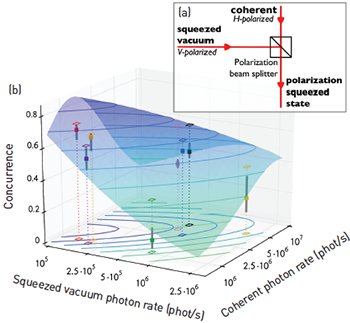 (a) Schematic of experiment in ref. 5, with SEM image of the fabricated zigzag chain of gold nanodisks (inset). (b) Near-field map measured for two orthogonal polarizations of incident light, showing “hot spots” at chain edges. (c) Spectral dependence of electric-field intensity near the first and last dielectric spheres (ref. 4); insets correspond to electric field at the different resonances of the single particle. (d) Experimental near-field maps of edge states excited in chain of dielectric particles.
(a) Schematic of experiment in ref. 5, with SEM image of the fabricated zigzag chain of gold nanodisks (inset). (b) Near-field map measured for two orthogonal polarizations of incident light, showing “hot spots” at chain edges. (c) Spectral dependence of electric-field intensity near the first and last dielectric spheres (ref. 4); insets correspond to electric field at the different resonances of the single particle. (d) Experimental near-field maps of edge states excited in chain of dielectric particles.
Ever since Epicurus introduced his atomic theory in ancient Greece, the nature of the microscopic world has been a central scientific question. Our modern vision now encompasses not only atoms but photons, electrons and other fundamental particles, as well as precise descriptions of their interactions. These ingredients, coupled with powerful computers, allow humans to explain a wide range of phenomena, from chemical reactions to supernovae.
Yet not everything can be explained this way. Many open questions in science, such as the origin of high-temperature superconductivity, concern strongly interacting, many-body systems. Because such interactions generate highly entangled states, these systems resist computational solutions even on the largest computers.
A bold proposal known as quantum simulation aims to overcome this roadblock using synthetic quantum systems.1 For example, the physics of interacting electron spins can be reproduced using ultracold atoms in an optical lattice, which offers direct access to the microscopic elements making up a macroscopic quantum system and allows direct study of their uncomputable microscopic behaviors. More recently, experiments with photonic Bose-Einstein condensates2 and strongly interacting photons3 have made photonic quantum simulators promising.
We recently showed how to study the individual photons that make up a macroscopic, photonic many-body system.4 We used a beam of polarization squeezed light, for which entanglement properties can be computed exactly, as the macroscopic system. We detected photon pairs from the squeezed beam with single-photon counters and used polarization state tomography, a tool from photonic quantum information, to measure their quantum states.
We observed strong entanglement, and confirmed several untested predictions such as the role of entanglement monogamy in macroscopic systems and a transition from bipartite entanglement to multipartite entanglement with increased squeezing. The work shows that photonic systems can be studied as quantum many-body systems, and opens the way to particle-by-particle analysis of photonic Bose-Einstein condensates and other optical manifestations of quantum condensed matter.
Researchers
Federica A. Beduini, Joanna A. Zielińska, Vito G. Lucivero, Yannick A. de Icaza Astizand Morgan W. Mitchell, ICFO–Institute of Photonic Sciences, Spain
References and Resources
1. J.I. Cirac and P. Zoller. Nat. Phys. 8, 264 (2012).
2. Jan Klaers et al. Nature 468, 545 (2010).
3. O. Firstenberg et al. Nature 502, 71 (2013).
4. F.A. Beduini et al. Phys. Rev. Lett. 114, 120402 (2015).
